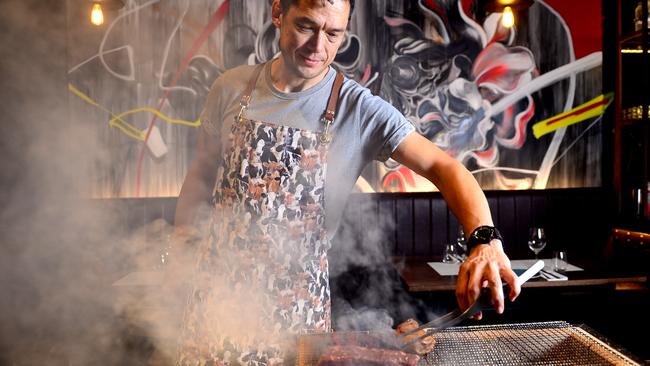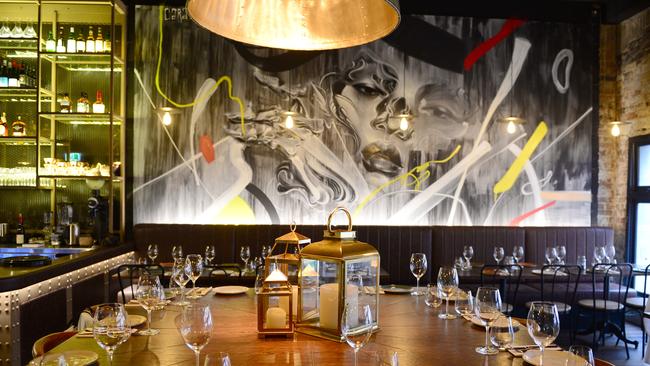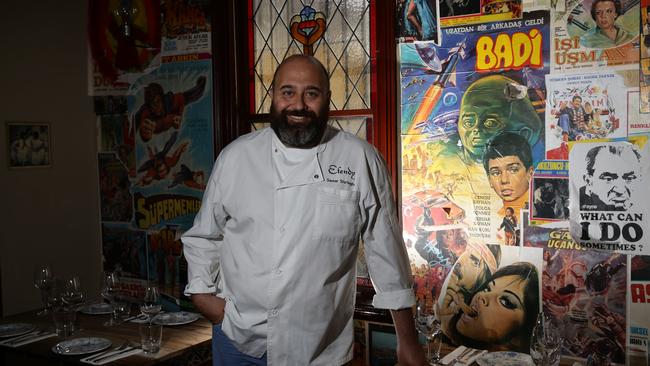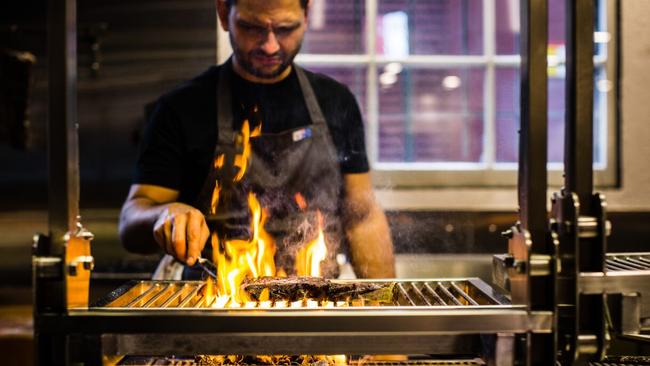The barbecue gets a gourmet makeover as chefs swap gas for charcoal
CHARCOAL is the hottest new ingredient on the Sydney dining scene as the barbecue takes on a star role in restaurant kitchens

Sydney Taste
Don't miss out on the headlines from Sydney Taste. Followed categories will be added to My News.
The humble Australian barbecue, usually confined to the backyard, is being given a gourmet upgrade as Sydney chefs swap their traditional gas burners for charcoal-fuelled fires in pursuit of enhanced smoky flavours.
Eastside Grill in Kensington St, Chippendale, opening tomorrow, is championing the Japanese konro grill.
Its kitchen will have three portable barbecues cooking Kurobuta pork skewers and bourbon-brined pork chops, Rangers Valley Black Angus beef aged for 270 days, shishito peppers and corn.
Eastside Grill chef Stanley Wong, who has previously worked at Spice Market in New York and the Mandarin Oriental in Hong Kong, believes adding smoke to a dish is a smart move.
“Australians like their barbecue and we have some of the best meat and charcoal on offer,” he says.
Wong will be using binchotan charcoal because it gives a very distinct flavour to his dishes.
“Binchotan is white charcoal made from oak . (Charcoal makers) burn the wood at a very high temperature, rapidly cool it and after they mix it, it turns white,” Wong says.
“With regular charcoal you get a flare-up when the fat drips on to the coals, which creates flame. But binchotan has almost no flare, so you get more of smoke flavour and it caramelises meat better.”

As well as imparting the rich, savoury umami flavour of smoke to the food, Wong believes diners are drawn to barbecues for another reason.
“There’s a primal attraction of cooking on heat and coals,” he says. “I think it’s trendy to have more charcoal in an open kitchen, people want to be closer to the cooking experience. At every party at home, people are either standing around the kitchen or the barbecue.”
Efendy in Balmain, which specialises in Turkish cuisine, is another eatery cooking its mains on charcoal.
As in Australia, cooking over charcoal is a traditional method in Turkey.
Chef and owner Somer Sivrioglu recently redesigned his kitchen so that Adana-style lamb kebap, chicken thigh fillet; beef and pistachio kofta and lamb shoulder tandir are cooked over charcoal.
The investment included installing stronger extractor fans, a charcoal pit to cook the charcoal, Turkish mangal and ocakbasi grills.

“We are a barbecue nation; I think it is more and more becoming popular,” Sivrioglu says.
As well as the cost of investing in kitchen equipment, cooking with charcoal requires more effort from the chef, but Sivrioglu believes the pay-off is worth it.
“You have to manage the fire, it’s like having another ingredient,” he says.
“You need to make sure the charcoal is cooked enough, that it’s not burning and control the flame as it goes to embers.
“It’s almost like cooking another dish, but for me, it’s another dimension of flavour you can’t get on a commercial grill.”

RESTAURANTS MAKING THE MOVE
• The Provincial, Rozelle, uses a traditional charcoal Argentinian grill, the parilla, to cook 80 per cent of its menu.
• Salaryman, Surry Hills, has a new menu moving away from ramen to focus on charcoal grilling
• Firedoor chef Lennox Hastie creates wood charcoal in two ovens that burn at up to 1600C, at his Surry Hills eatery.
• Otis Bar and Grill, Campbelltown, cooks meats including Schottlanders wagyu over a charcoal grill.
renata.gortan@news.com.au



